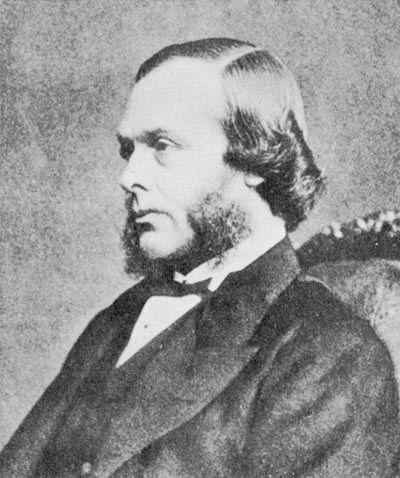Antiseptic(s) (from Greek ἀντί anti, "against" and σηπτικός sēptikos, "putrefactive") are antimicrobial substances that are applied to living tissue/skin to reduce the possibility of infection, sepsis, or putrefaction. Antiseptics are generally distinguished from antibiotics by the latter's ability to be transported through the lymphatic system to destroy bacteria within the body, and from disinfectants, which destroy microorganisms found on non-living objects.
Disinfectants do not kill bacterial spores e.g., on surgical instruments; a sterilization process is required for that. Even sterilization may not destroy prions.
Some antibiotics are true germicides, capable of destroying microbes (bacteriocidal), while others are bacteriostatic and only prevent or inhibit their growth.
Antibacterials are antiseptics that have the proven ability to act against bacteria. Microbicides which destroy virus particles are called viricides or antivirals.
Antisepsis was recommended by Hungarian physician Ignaz Semmelweis in 1847 but, tragically, he was ignored (and worse). The widespread introduction of antiseptic surgical methods followed the publishing of the paper Antiseptic Principle of the Practice of Surgery in 1867 by Joseph Lister, inspired by Louis Pasteur's germ theory of putrefaction. In this paper, Lister advocated the use of carbolic acid (phenol) as a method of ensuring that any germs present were killed. Some of this work was anticipated by:
Ancient Greek physicians Galen (circa 130–200) and Hippocrates (circa 400 BC) and Sumerian clay tablets dating from 2150 BC that advocate the use of similar techniques.Medieval surgeons Hugh of Lucca, Theoderic of Servia, and his pupil Henri de Mondeville were opponents of Galen's opinion that pus was important to healing, which had led ancient and medieval surgeons to let pus remain in wounds. They advocated draining and cleaning wound lips with wine, dressing the wound after suturing it if necessary, and leaving the dressing on for ten days, soaking it in warm wine all the while, before changing it. Their theories were bitterly opposed by Galenist Guy de Chauliac and others trained in the classical tradition.Joseph Smith alluded to the use of alcohol as an antiseptic in February 1833, when he wrote what is now section 89 of the Doctrine and Covenants, popularly known as the "Word of Wisdom". Specifically, verse 7 states: "And, again, strong drinks are not for the belly, but for the washing of your bodies."Oliver Wendell Holmes, Sr., who published The Contagiousness of Puerperal Fever in 1843Florence Nightingale, who contributed substantially to the report on the Royal Commission on the Health of the Army (1856–1857), based on her earlier workIgnaz Semmelweis, who published his work The Cause, Concept and Prophylaxis of Childbed Fever in 1861, summarizing experiments and observations since 1847Hydrogen peroxide is used as a 6% (20 Vols) solution to clean and deodorize wounds and ulcers. More commonly, 3% solutions of hydrogen peroxide have been used in household first aid for scrapes, etc. However, the strong oxidization causes scar formation and increases healing time during fetal development.Iodine is usually used in an alcohol solution (called tincture of iodine) or as Lugol's iodine solution as a pre- and postoperative antiseptic. Some people do not recommend disinfecting minor wounds with iodine because of concern that it may induce scar tissue formation and increase healing time. However, concentrations of 1% iodine or less have not been shown to increase healing time and are not otherwise distinguishable from treatment with saline. Novel iodine antiseptics containing povidone-iodine (an iodophor, complex of povidone, a water-soluble polymer, with triiodide anions I3−, containing about 10% of active iodine) are far better tolerated, do not negatively affect wound healing, and leave a deposit of active iodine, thereby creating the so-called "remnant", or persistent, effect. The great advantage of iodine antiseptics is their wide scope of antimicrobial activity, killing all principal pathogens and, given enough time, even spores, which are considered to be the most difficult form of microorganisms to be inactivated by disinfectants and antiseptics.Polyhexanide (polyhexamethylene biguanide, PHMB) is an antimicrobial compound suitable for clinical use in critically colonized or infected acute and chronic wounds. The physicochemical action on the bacterial envelope prevents or impedes the development of resistant bacterial strains.Balsam of Peru is a mild antiseptic.By continued exposure to antibiotics, bacteria may evolve to the point where they are no longer harmed by these compounds.
Bacteria can also develop a resistance to antiseptics, but the effect is generally less pronounced.
The mechanism by which bacteria evolve may vary in response to different antiseptics. Low concentrations of an antiseptic may encourage growth of a bacterial strain that is resistant to the antiseptic, where a higher concentration of the antiseptic would simply kill the bacteria. In addition, use of an excessively high concentration of an antiseptic may cause tissue damage or slow the process of wound healing. Consequently, antiseptics are most effective when used at the correct concentration—a high enough concentration to kill harmful bacteria, fungi or viruses, but a low enough concentration to avoid damage to the tissue.

